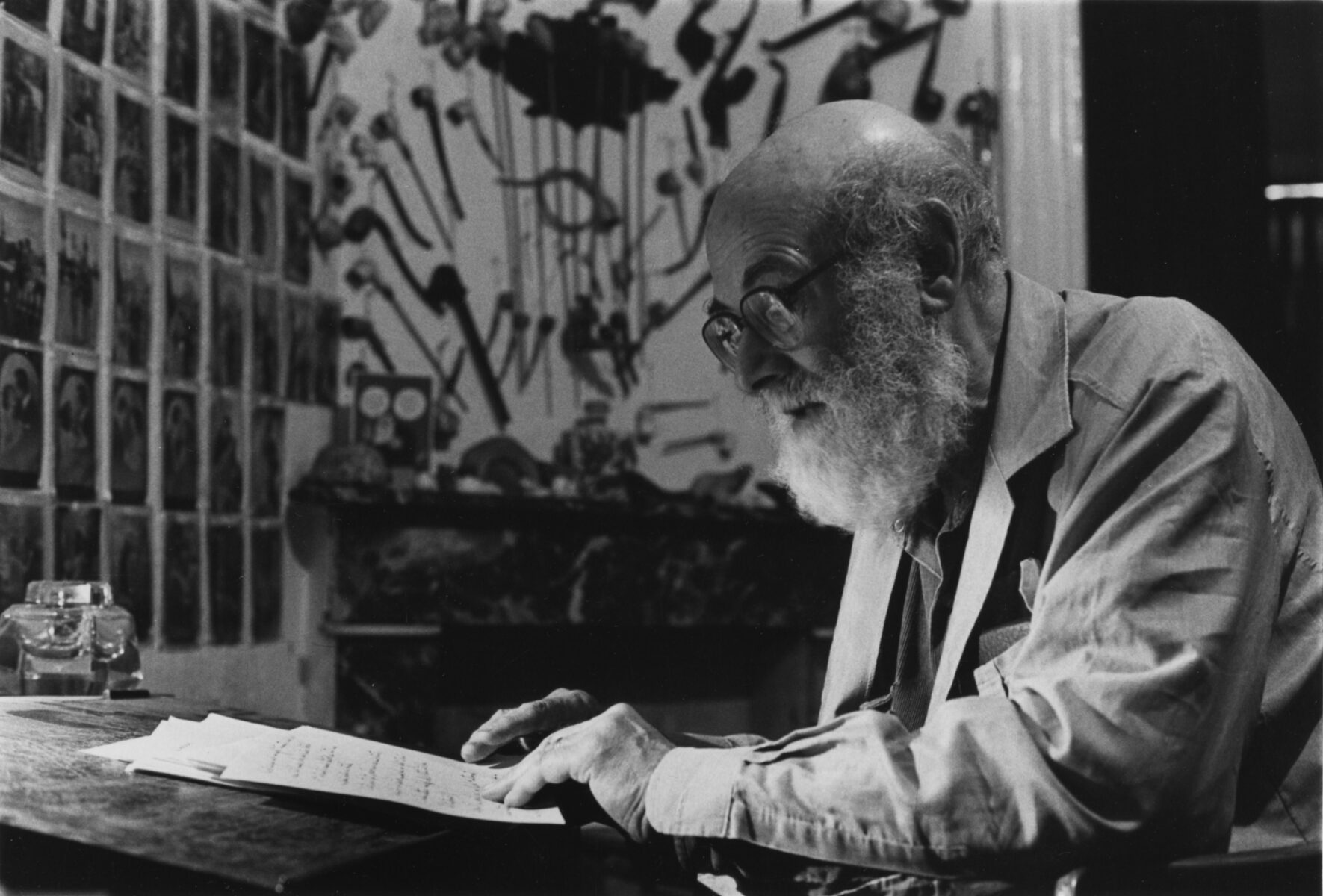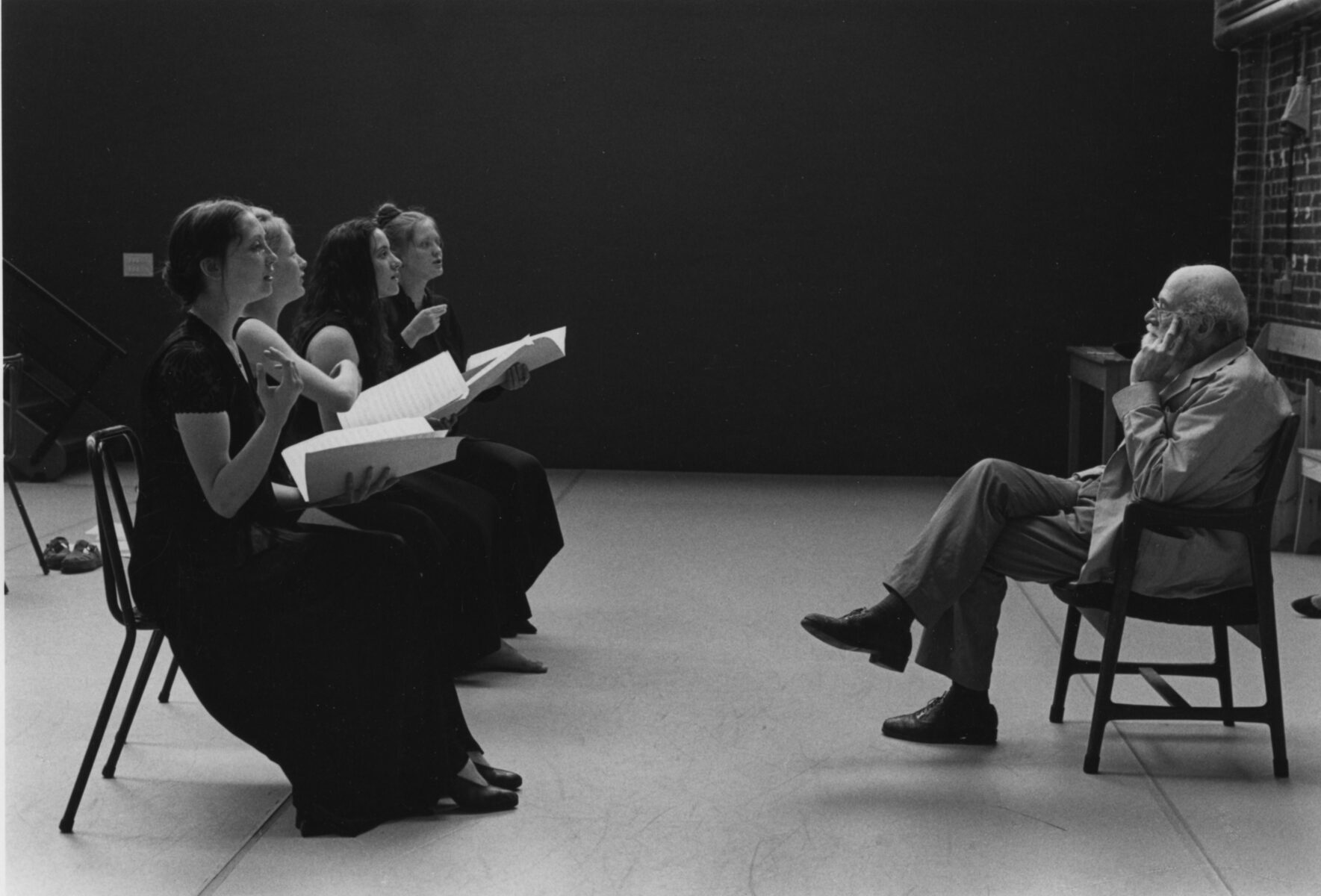Âge d'Or / Silent Film
Fernand Schirren
#agedor #stillefilm #cinémamuet
Fernand Schirren (1920-2001)

Fernand Schirren (1920-2001)
Publication + Exhibition
09.06.2021 > 31.08.2021
« Le pianiste accompagnateur de films muets »
In the recently published manuscript 'The pianist who accompanies silent films', Schirren poetically wrote down his guidelines for improvising pianists. CINEMATEK recently released this manuscript "The Pianist Who Accompanies Silent Movies". The publication is available for €8, both online as well as at the front desk.
Discover the life and work of Fernand Schirren (1920-2001) through personal objects, film images and archival documents, including the recently published manuscript 'Le pianiste accompagnateur de films muets'.
This exhibition (09.06.2021-31.08.2021) is a unique dive into the creative universe of this influential personality: he was not only an extraordinary musician, the rhythm teacher at Béjart and Anne Teresa De Keersmaeker, accompanist of silent films at the Film Archive and of the start-up of the Film Museum in 1962 until the 1990s and a collector of pipes and romantic postcards.
Two testimonials about Schirren

Testimonial of Anne Teresa De Keersmaeker, choreographer

“Following Schirren's classes is a global experience. The philosophical discourse cannot be separated from the simplest actions: how to handle the sticks, how to put the feet on the ground. Schirren's thinking is practical and concrete, but it avoids any simplification, it avoids dividing the world into compartments and categories. Fernand Schirren seeks the unity of things. Dance, theatre, music: what connects them is more important than what sets them apart. Rhythm is everywhere, not just in art.

The forces of earth and heaven, male and female, life and death; submit to or resist gravity. It is from these poles that Schrirren develops his theory and practice. His thinking is rooted in Western culture and tradition, but personally I also find in it the questions of a more Eastern approach. Moreover, I have always been very sensitive to the seemingly paradoxical combination of a certain conservatism and a more primitive nature open to chaos and anarchy.”
In addition to his work with choreographers, Schirren also accompanied silent films for the Royal Film Archive for many years, even before the establishment of the Film Museum (now CINEMATEK) in 1962. His live piano playing on films were then the only moments where this genius musician could still be seen. hear play.
“Je ne joue jamais” Fernand Schirren
In 1982, Schirren helped put together a permanent team of pianists to accompany the daily projections, including Jean-Luc Plouvier .
Testimonial of Jean-Luc Plouvier
“I started at the Film Museum in 1982, when I was 18 years old, in response to an advertisement. The museum had decided to be the only one in the world to reserve a room with 30 seats for the screening of two silent films per evening. Then it was important to put together a team of pianists who could comply with the radical edict of curator Jacques Ledoux: no day without silent film, no silent film without music. Sometimes the room was full, sometimes it was empty. If no spectator showed up after 15 minutes, I could go home. My audition was with Ledoux himself, who has continued to follow my wanderings and progress afterwards. I was intimidated by his intelligence, behind which you could suspect a hard-to-control character, despite that eternal half-smile. In the Museum I saw references to the history of surrealism, which I was absolutely fond of. Ledoux himself had acquired the cinephilia at the age of fifteen, at a Luis Buñuel retrospective.
Schirren...c’est un des derniers grands surréalistes belges
(Maurice Béjart)
I had just started at the Conservatory and my desire to shine contradicted what Ledoux expected in musical expression: fragility, mystery and allusion. “You play too hard, but you can stay.” He then left me under the care of Fernand Schirren, the pianist who had accompanied the silent films here for years. Schirren had been music director of Maurice Béjart's ballet and a star teacher at his dance school Mudra. He was a rather picturesque character, who, incidentally, staged that picturesque meticulously. He sometimes accentuated his Brussels accent, which contrasted in a pleasant way with his undisputed status of wise man. Anna Teresa De Keersmaeker said of him that he had developed "a very Brussels version of Taoism".
Polyvalent’...‘Pédagogue
(Maurice Béjart)
The Schirren system was based on the idea of the eternal movement: the accent in the music gives support and stability, he called it the “Boum”, and must always be corrected and restarted by the “Hey”, an escape, a jumped into the air. Schirren felt first and foremost a percussionist, later also a sound engineer-mechanic on his tape recorder. Like Glenn Gould, he was a pianist with disdain for the piano and that image of grandeur surrounding it. He taught me, sometimes in a teasing way (“don't stick around” or “bravooo, you play really well, but that's not the problem!”), To turn my back on “pianism” and to understand film accompaniment in terms of mounting and dosing of energy. Improvising on silent films without preparation is a special discipline, which can be distinguished from writing film music. The pianist is not on the side of the director whose work is premeditated and its effort hidden. I am now talking about the concrete spatial situation in which you sit in front of the screen, just like the other spectators, in the front row or in front of it, as a representative of the audience who testifies to their reverie with musical interpretation.
La fête en toute ses formes refoule la mort
(Ferdinand Schirren)
Thirty-eight years after my first silent film, I still experience stage fright at the start of every show. Choosing the right style is an eternal torment. Why? Because there is an unsolvable tension in this particular craft. On the one hand, you owe your loyalty to an art form that has very quickly reached maturity and even perfection in silent film. The silent film is no more cinema in its infancy than Giotto is for painting. It is stupid and evil to accompany silent films with overt suggestions of clumsiness and primitivism. On the other hand, film is also a popular art, which can reduce serious pretension to a mess. The music side for silent films is therefore condemned to a never-ending negotiation between respect for masterpieces and a popular approach that recalls well-known choruses, the popular song, dance and party music. To be honest, I don't know anything more exciting.”
Schirren Trailer MIX
Curious for more? Listen to the audio clip. With thanks to Caroline Kervern